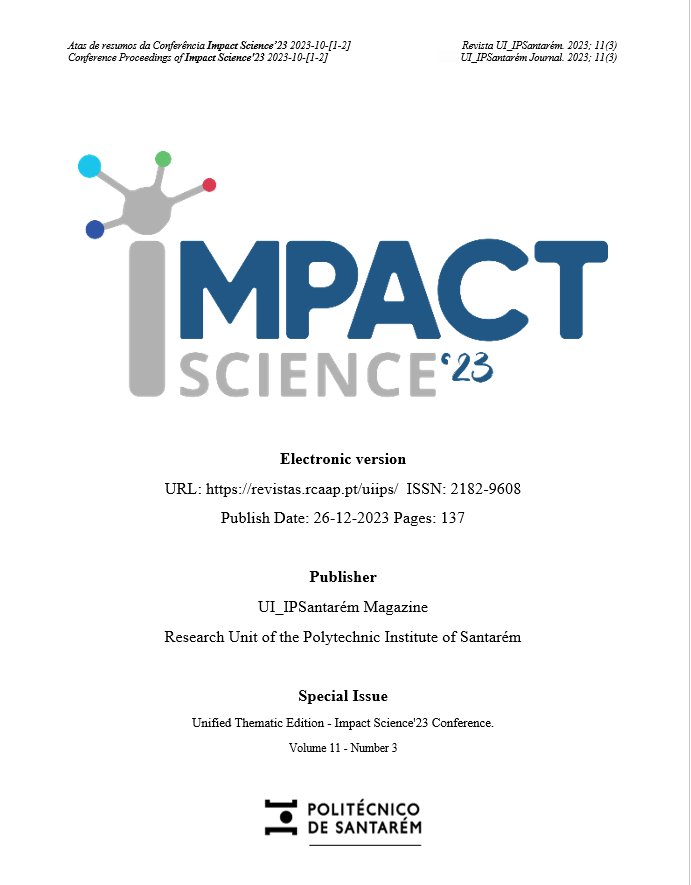Study of cultural and oenological adaptation of Croatian grape varieties to the territory of the Municipality of Alenquer
DOI:
https://doi.org/10.25746/ruiips.v11.i3.32509Keywords:
phenological states, wine, Posip, Marastina, Vugava, Plavac Mali, Plavina, SvrdlovinaAbstract
Viticulture is historically linked to Portugal and the Municipality of Alenquer as an agricultural activity of relevant economic and social importance. In 2017, an International Cooperation Agreement was signed between the Municipality of Alenquer and the Croatian City of Benkovac, a city located in the county of Zadar. This partnership includes the INIAV Polo de Inovação de Dois Portos, the University of Zagreb, the Faculty of Agriculture, the Department of Viticulture & Oenology and the Adega Cooperativa da Labrugeira.
In 2019, the autochthonous grape varieties of the two regions were exchanged. In Alenquer, six grape varieties from the Benkovac region were planted and in the Benkovac, Croatian town, six grape varieties from the Alenquer region were planted. The Croatian varieties planted were Posip B, Marastina B, Vugava B Plavac Mali N, Plavina N and Svrdlovina N. The Portuguese varieties planted in Croatia were Arinto B, Fernão Pires (B), Vital B, Touriga Nacional N, Touriga Franca N and Vinhão. In 2022, the first wines from Croatian grape varieties planted in Portugal (Alenquer) were vinified and produced, and in Croatia the first wines from Portuguese grape varieties were produced.
The aim of this study is to evaluate the agronomic and oenological potential of grapes from Croatian varieties installed in Portugal. For evaluation and comparison, Fernão Pires and Castelão, Portuguese reference varieties, were used. The Vital variety, which is on the verge of extinction and which the Municipality and the Adega Cooperativa da Labrugeira intend to enhance within the scope of the local territories, was also additionally used as a local reference.
For the study of agronomic characteristics, 5 blocks of 6 vines for each variety were considered. Phenological states, budbreak time, fertility index, berry and bunch characteristics and susceptibility to cryptogamous diseases were evaluated according to the OIV descriptors. The wines produced were evaluated according to the parameters of the summary analysis, glucose + fructose, glucose, tartaric acid, malic acid; potassium, calcium, iron, copper, tartaric and protein stability, chromatic characteristics by the CieLab method, intensity and color tone, as well as the characterization of the phenolic fraction.
For the varieties under study, the vegetative cycle varies from early to late, with the existence of varieties with shorter and longer vegetative cycles having also been registered. The Posip B, Marastina B and Vugava B varieties showed a similar bud break, and are later than Vital (B) and Fernão Pires, with 10 to 12 days of difference. Svrdlovina N is the earliest of all, 10 days before Castelão N. Plavina N was the last to sprout, 15 days after Castelão N. Plavac Mali (N) has the shortest vegetative cycle while Marastina B and to Plavina N have a longer cycle, which may be the ones that optimize their adaptability to the territory. The fertility rate varies between 9% and 13%. Wines obtained from Croatian grape varieties showed higher total acidity and lower pH, as well as lower levels of total polyphenols and total anthocyanins. The results obtained refer to the first year of trials.
Downloads
Published
How to Cite
Issue
Section
License
Copyright (c) 2023 Ana Isabel Marques, Paulo Franco, José Eira-Dias, Ricardo Noronha, João Inácio, Ana Figueiredo, Miguel Policarpo, Paulo Marques, Jorge Cunha, Helena Mira

This work is licensed under a Creative Commons Attribution-NonCommercial-NoDerivatives 4.0 International License.
Authors publishing in this journal agree to the following terms:
Authors retain copyright and grant the journal the right of first publication, with the article simultaneously licensed under the Creative Commons Attribution License that allows sharing of the work with acknowledgement of authorship and initial publication in this journal.
Authors are permitted to enter into additional contracts separately for non-exclusive distribution of the version of the article published in this journal (e.g., publish in an institutional repository or as a book chapter), with acknowledgment of authorship and initial publication in this journal.
Authors have permission and are encouraged to publish and distribute their work online (e.g., in institutional repositories or on their personal webpage) at any point before or during the editorial process, as this may generate productive changes, as well as increase the impact and citation of the published work.



